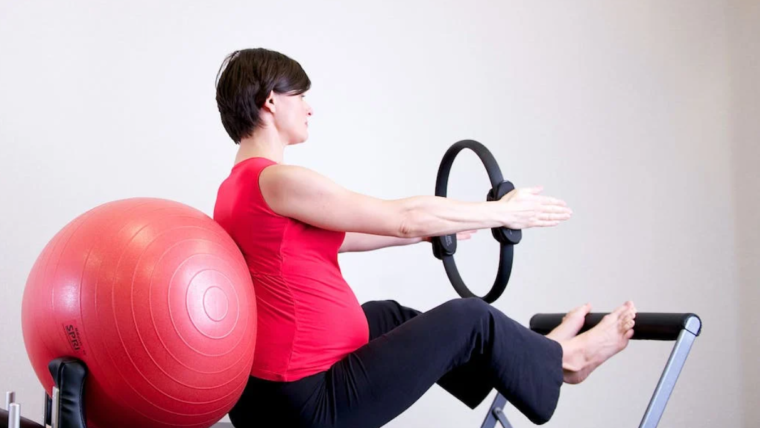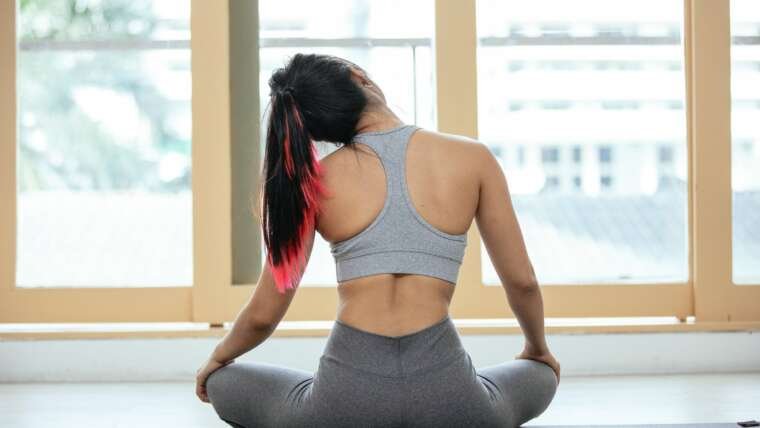In today’s fast-paced world, anxiety has become a prevalent concern affecting millions of people globally. While medication and therapy offer effective treatments, yoga provides a holistic approach to managing anxiety by addressing the interconnectedness of the mind, body, and spirit. In this article, we explore the transformative power of yoga as a tool for alleviating anxiety and promoting overall well-being. Yoga for Anxiety – Discover calming yoga practices to alleviate anxiety. Explore gentle asanas, mindful breathing techniques, and meditation to promote relaxation and inner peace. Harness the transformative power of yoga for anxiety relief.
Yoga is the perfect opportunity to be curious about who you are.
Understanding Anxiety:
Anxiety manifests in various forms, ranging from generalized anxiety disorder (GAD) to panic attacks and social anxiety. It often stems from a combination of genetic, environmental, and psychological factors, leading to persistent feelings of worry, fear, and apprehension. Chronic anxiety can significantly impact daily functioning, affecting work, relationships, and quality of life.
The Role of Yoga in Anxiety Management:
Yoga offers a multifaceted approach to anxiety management, incorporating mindful movement, breathwork, meditation, and relaxation techniques. By fostering a deep sense of inner awareness and tranquility, yoga empowers individuals to navigate anxious thoughts and emotions with greater resilience and ease.
Breathwork and Mindfulness:
Central to yoga practice is pranayama, the art of breath control. Deep breathing techniques such as diaphragmatic breathing and alternate nostril breathing activate the parasympathetic nervous system, inducing a state of relaxation and calm. By focusing on the breath, individuals cultivate mindfulness, grounding themselves in the present moment and reducing the grip of anxiety-provoking thoughts.
Mindful Movement and Asana Practice:
Yoga asanas, or postures, promote physical strength, flexibility, and balance while simultaneously calming the mind. Gentle, restorative poses such as Child’s Pose, Forward Fold, and Legs-Up-the-Wall offer comfort and release tension stored in the body. Vinyasa flows and power yoga sequences provide opportunities for movement meditation, encouraging practitioners to synchronize breath with movement and cultivate a sense of flow and embodiment.
Meditation and Visualization:
Yoga encourages the practice of meditation as a means of quieting the mind and cultivating inner peace. Mindfulness meditation techniques, such as body scans and loving-kindness meditation, promote self-compassion and acceptance, counteracting the self-critical tendencies often associated with anxiety. Guided visualizations and yoga nidra (yogic sleep) offer profound relaxation and stress relief, allowing individuals to access deeper states of consciousness and healing.
The Importance of Self-Compassion:
Yoga emphasizes the principle of ahimsa, or non-harming, towards oneself and others. By cultivating self-compassion and self-love, individuals develop greater resilience in the face of anxiety-provoking situations. Through gentle self-care practices, such as journaling, spending time in nature, and engaging in creative expression, individuals nourish their souls and replenish their emotional reserves.
Managing anxiety through yoga involves practicing calming asanas that promote relaxation, grounding, and mindfulness. Here are some asanas that can help alleviate anxiety:
- Child’s Pose (Balasana): This gentle resting pose provides a sense of security and comfort. Kneel on the mat, sit back on your heels, and extend your arms forward with your forehead resting on the ground. Breathe deeply into your back body, allowing tension to release with each exhale.
- Forward Fold (Uttanasana): Forward folds help quiet the mind and release tension in the back and hamstrings. Stand with your feet hip-width apart, hinge at the hips, and fold forward, allowing your torso to relax over your legs. Let your head hang heavy and hold onto opposite elbows for a deeper stretch.
- Seated Forward Bend (Paschimottanasana): This seated pose calms the nervous system and stretches the spine and hamstrings. Sit on the mat with your legs extended in front of you, inhale to lengthen your spine, then exhale to fold forward from the hips. Hold onto your shins, ankles, or feet, and relax into the pose.
- Cat-Cow Stretch (Marjaryasana-Bitilasana): This dynamic movement helps release tension in the spine and promotes mindful breathing. Start on all fours, inhale to arch your back and lift your gaze (Cow Pose), then exhale to round your spine and tuck your chin to your chest (Cat Pose). Repeat for several rounds, syncing movement with breath.
- Standing Forward Bend (Uttanasana): Standing forward bend calms the mind and releases tension in the neck, shoulders, and back. Stand with your feet hip-width apart, hinge at the hips, and fold forward, letting your hands hang towards the ground or grabbing onto opposite elbows. Soften your knees if needed.
- Legs-Up-the-Wall Pose (Viparita Karani): This gentle inversion promotes relaxation and relieves tension in the legs and lower back. Lie on your back with your hips close to the wall, then extend your legs up the wall and rest your arms by your sides. Close your eyes and focus on your breath as you relax into the pose.
- Corpse Pose (Savasana): The ultimate relaxation pose, Savasana helps calm the mind and release physical and mental tension. Lie on your back with your legs extended and arms by your sides, palms facing up. Close your eyes and focus on your breath, allowing your body to soften and sink into the mat.
Practicing these asanas regularly can help soothe anxiety, quiet the mind, and promote a sense of inner peace and well-being. Remember to breathe deeply and mindfully as you move through each pose, allowing yourself to fully experience the present moment.
Conclusion:
Yoga serves as a powerful antidote to the debilitating effects of anxiety, offering a pathway to greater peace, resilience, and well-being. By integrating breathwork, mindful movement, meditation, and self-compassion into daily life, individuals can cultivate a profound sense of inner calm and equilibrium. As we embrace the transformative potential of yoga, we embark on a journey of self-discovery and healing, reclaiming our innate capacity for serenity and joy in the midst of life’s challenges.
Discover Daily Yoga Inspiration to rejuvenate your mind, body, and soul. Embrace wellness with insightful tips, guided practices, and motivational insights. Elevate your yoga journey, one breath at a time.




1 Comment
zoritoler imol
I enjoy the efforts you have put in this, regards for all the great posts.